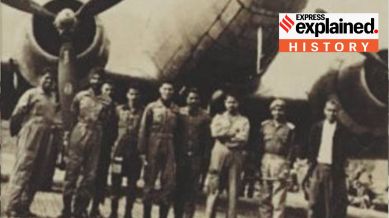Infantry Day 2024: Recalling the first Indian military action, on this date in 1947 in J&K
Infantry Day, observed on October 27, commemorates the first military action by an Indian regiment against external aggression. We recall the landmark events that transpired on this day in 1947

Prime Minister Narendra Modi on Sunday (October 27) greeted soldiers and veterans of all ranks on the occasion of Infantry Day, lauding their “indomitable spirit and courage.” In a post on X, he wrote, “The infantry embodies the essence of strength, valour and duty, inspiring every Indian.”
We recall the events that transpired on October 27, 1947, when the First Battalion of the Sikh Regiment arrived at Srinagar to defend Jammu and Kashmir from external aggression.
What events preceded the deployment of Indian soldiers in J&K?
On October 26, the Maharaja of Jammu and Kashmir, Hari Singh, signed the instrument of accession, making his state a part of Indian dominion and thus paving the way for Indian troops to be deployed in the state to fight against Pakistani invaders. With Prime Minister Jawaharlal Nehru’s approval, an emergency meeting of the Western Army Commander was held to rush troops to Srinagar, even as the Pakistani invaders were en route to the summer capital of J&K.
Which troops were deployed on October 27?
The 1 Sikh Battalion, commanded by Lt Col Dewan Ranjit Rai, was the first to be rushed to Srinagar by air. The battalion was stationed in Gurgaon at the time, but of its four companies two had been deployed to aid civil authorities elsewhere to tackle the post-independence communal riots. Thus, of the remaining two companies, one battery comprising the 13 Field Regiment and an artillery regiment was provided to it in an infantry role. All these troops assembled at Palam airport in Delhi in the early hours of October 27 to be airlifted to Srinagar Airfield.
Seven Dakota aircraft were assembled at Palam airport on the morning of October 27, each scheduled to do two sorties to airlift the troops of 1 Sikh and their equipment. Only two planes belonged to the Indian Air Force, the rest were sourced from private airlines, including that of Biju Patnaik who would go on to become the Chief Minister of Orissa (now Odisha). The planes took to air shortly after sunrise where they would thus make history.
What was the importance of the induction of troops on October 27?
Former Governor of J&K and Assam, Lt Gen SK Sinha, then a Major involved in the process recalled that the original plan was to send a brigade-level force by road. Considering the poor state of the roads linking Pathankot and Srinagar, this plan was revised to rush in troops by air. Another brigade would later follow by road.
This step proved decisive in ensuring the airfield was secure from falling into the hands of Pakistani invaders: following the original plan would have given Pakistan enough time to reinforce its invaders through air and thus occupy the Valley.
After securing the Srinagar airfield, the 1 Sikh battalion led by Lt Col Rai rushed to Baramulla to delay the advance of the invaders towards Srinagar. Their efforts also allowed the Indian troops to recoup, sending in reinforcements to Srinagar by air. He was posthumously awarded the first Maha Vir Chakra for his bravery, having laid down his life near Baramulla while in battle.
This is an updated version of an explainer published in 2020.